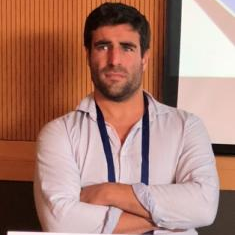Health-Related Components of Physical Fitness in Individual, Combat and Team Sports
A special issue of Sports (ISSN 2075-4663).
Deadline for manuscript submissions: closed (31 May 2021) | Viewed by 24791
Special Issue Editors
2. Biomedical Research and Innovation Institute of Cádiz (INiBICA) Research Unit, Puerta del Mar University Hospital, Cádiz, Spain
Interests: exercise training; sports; physical fitness; performance; exercise physiology; health; obesity and comorbidities; metabolism; nutrition and endocrine system
Special Issues, Collections and Topics in MDPI journals
2. Biomedical Research and Innovation Institute of Cádiz (INiBICA) Research Unit, Cádiz, Spain
Interests: sport and exercise physiology; physical exercise; combat sports; cardiorespiratory fitness; athlete performance; nutritional assessment; gut microbiota for health and performance
Special Issues, Collections and Topics in MDPI journals
Special Issue Information
Dear Colleagues,
Health-related physical fitness refers to specific components of physical fitness, such as flexibility, cardiorespiratory fitness, muscular fitness, and body composition. Health-related physical fitness is considered one of the most important health markers, as well as a predictor of morbidity and mortality in relation to cardiovascular disease. Regular participation in different sport training programs can improve the five health-related fitness components.
The aim of this Special Issue is to provide new insights into “Health-Related Components of Physical Fitness in Individual and Team Sports”. We invite investigators to contribute with original research, meta-analysis, reviews, case studies, short communications, and book reviews related to this topic. Special attention will be given, but no limited, to comparison of different sport modes/protocols, individual responsiveness, physiological changes, body composition, effects of the manipulation of different variables, and influence of external and individual factors (such as nutrition, rest, stress, genetics, and concurrent training, amongst others).
Prof. Dr. Jesús Gustavo Ponce-González
Prof. Dr. Cristina Casals
Guest Editors
Manuscript Submission Information
Manuscripts should be submitted online at www.mdpi.com by registering and logging in to this website. Once you are registered, click here to go to the submission form. Manuscripts can be submitted until the deadline. All submissions that pass pre-check are peer-reviewed. Accepted papers will be published continuously in the journal (as soon as accepted) and will be listed together on the special issue website. Research articles, review articles as well as short communications are invited. For planned papers, a title and short abstract (about 100 words) can be sent to the Editorial Office for announcement on this website.
Submitted manuscripts should not have been published previously, nor be under consideration for publication elsewhere (except conference proceedings papers). All manuscripts are thoroughly refereed through a single-blind peer-review process. A guide for authors and other relevant information for submission of manuscripts is available on the Instructions for Authors page. Sports is an international peer-reviewed open access monthly journal published by MDPI.
Please visit the Instructions for Authors page before submitting a manuscript. The Article Processing Charge (APC) for publication in this open access journal is 1800 CHF (Swiss Francs). Submitted papers should be well formatted and use good English. Authors may use MDPI's English editing service prior to publication or during author revisions.
Keywords
- fitness
- health
- athletes
- resistance training
- endurance training
- quality of life
- exercise physiology
- sport performance







